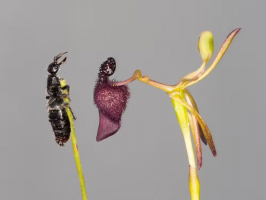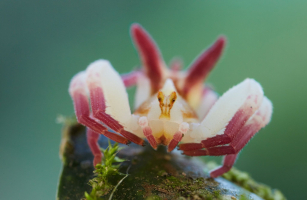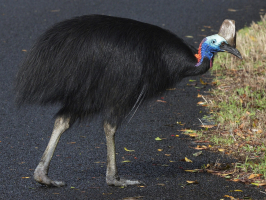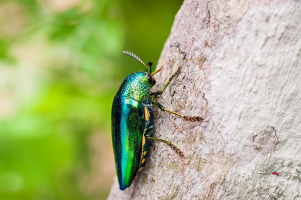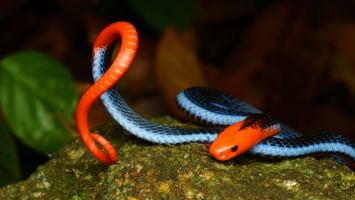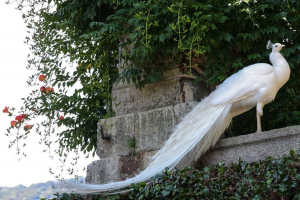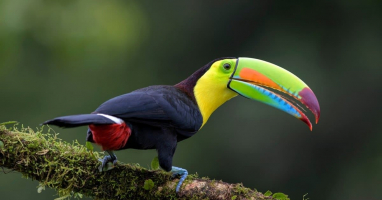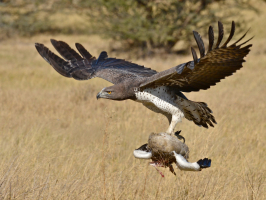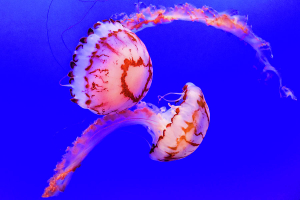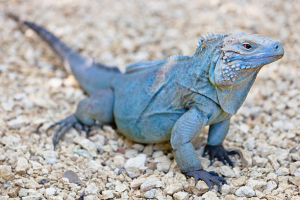Top 10 World's Most Colorful Chameleons
Most people have at least a passing familiarity with chameleons, the lizards known for changing their colors to camouflage when needed. But not everyone knows ... read more...that there are actually over one hundred different chameleon species. And many of them are even more colorful than you’re imagining. Below is a list of the most colorful chameleons in the world, let's find out!
-
The Knysna Dwarf Chameleon (Bradypodion damaranum) is a species of dwarf chameleon in the Bradypodion ("slow-footed") genus that is endemic to South Africa. In the eastern Western Cape and western Eastern Cape, the Knysna dwarf chameleon is found on the south-facing slopes of the Outeniqua and Tsitsikamma Mountains all the way to the ocean.
The Bradypodion species with the longest tails is this one. Its tongue is twice as long as its body, which is typical of most chameleons, and it can shoot it out of its mouth using a unique jaw muscle. The chameleon can now collect insects far away thanks to this. The brilliant green to bluish skin of the Knysna dwarf chameleon is adorned with purple, yellow, and pink hues, and it has a noticeable casque. It has a maximum overall length of 180 mm.
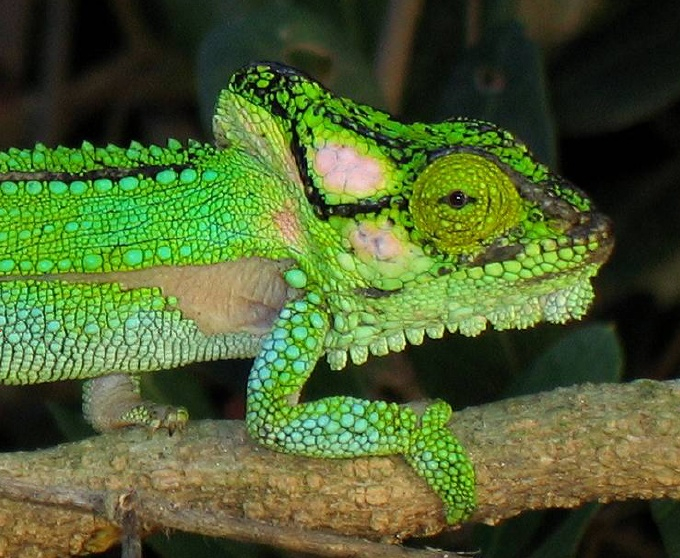
Wikipedia 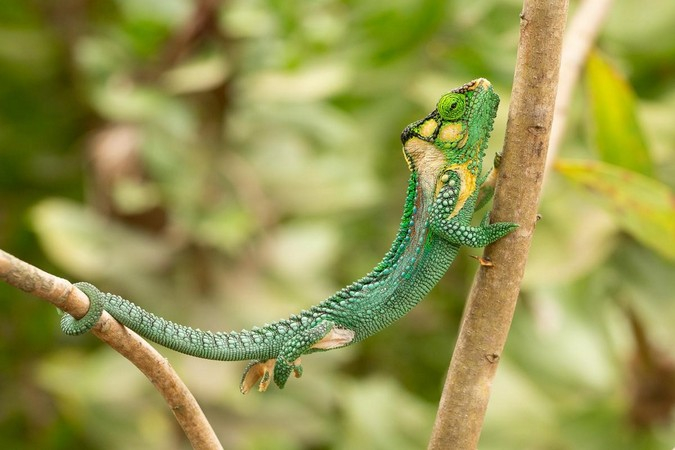
DeviantArt -
The Cape Dwarf Chameleon (Bradypodion pumilum) is a chameleon native to the South African province of the Western Cape, where it is restricted to the region around Cape Town. Male and female Cape dwarf chameleons mature to similar adult sizes, reaching lengths of over 15 cm, including the tail. The newborns are normally a little longer than 2 cm in length and resemble smaller counterparts of the adults in appearance. Color variety, saturation, and pattern in adults can vary quite a little, with some appearing considerably more bright than others. Like the majority of chameleons, it has a prehensile tail and feet that are well adapted to grasping twigs. The feet also have tiny claws on the end that help with grip.
Chameleons are typically relatively slow moving, but they have a distinctive shaking that may cause prey and predators to mistake them for leaves. They are capable of moving up to a few centimeters per second when agitated. If challenged further, they may puff themselves up, hiss, drastically change their color, and bite. They do not have sharp teeth, so their bites rarely inflict more than a slight pinch.
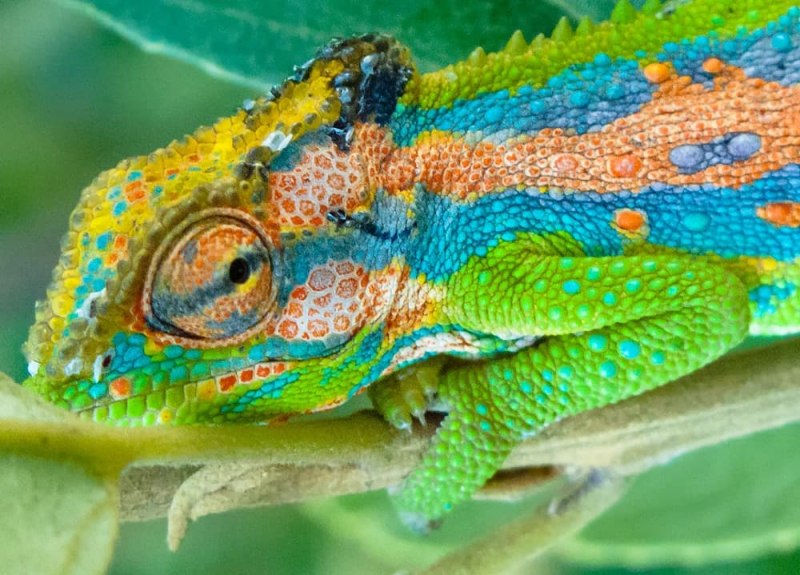
NatureRules1 Wiki - Fandom 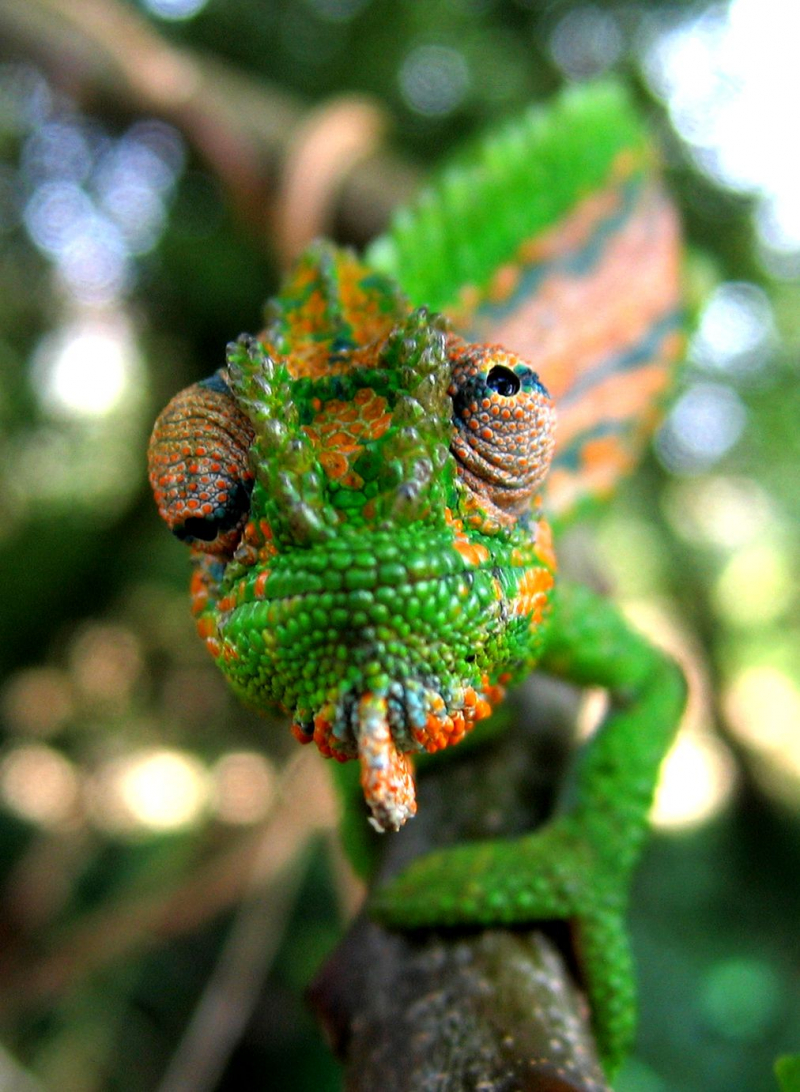
Pinterest -
Trioceros melleri, with the common names Meller's Chameleon and giant one-horned chameleon, is the largest species of chameleon from the African mainland. John Gray, a biologist and taxon authority, mentions "Dr. Meller" in the section of his 1865 description concerning the habitat of the species, which gives the Meller's chameleon both its common and scientific names.
Huge male T. melleri, the largest chameleon from the continent of Africa, generally grows to a length of 24 inches (61 cm), but exceptionally large individuals have reportedly grown to a length of nearly 30 inches (76 cm) and weighed 21 oz (600 g). The chameleon's sides are covered in large horizontal bands and spots that might be brown, dark green, yellow, or even black. The creature has deep forest green and white stripes as its base color, but like many chameleons, it is capable of changing these colors in response to different environmental factors. When being handled or fed, they may exhibit black and white spots.
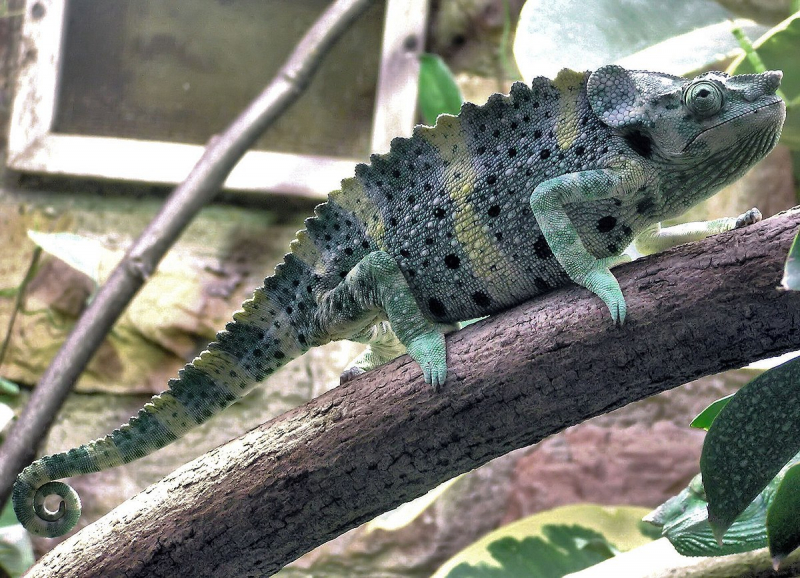
National Geographic 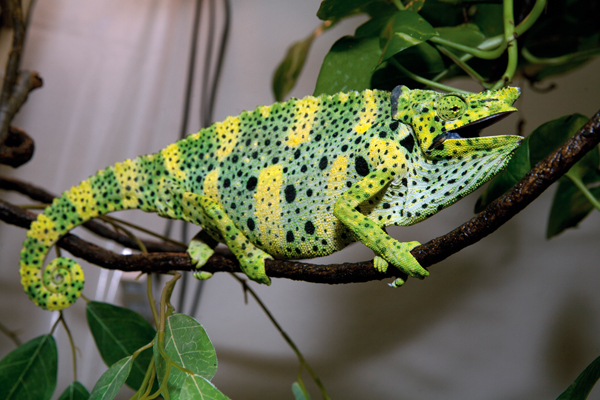
Reptiles Magazine -
Nosy Be Panther Chameleon is a very popular panther chameleon. It is the 3rd most common subspecies of panther chameleon partly as it has some exceptional colors including blues, turquoise, purples, and greens. These stunning Nosy be panther chameleons live on the little island of Nosy Be, which is located off the northwest coast of Madagascar. These Chameleons are is easily the most gorgeous colors and easiest to handle of all species of pet chameleon.
The average length of a male nosy be panther chameleon is up to 18 inches, whilst the average length of a female is 10 to 14 inches. A healthy male panther chameleon weighs anywhere between 140 and 180 grams, whereas a healthy female weighs anything between 60 and 100 grams. Nosy Be Panther Chameleons readily intake almost any feeder insect. Some common feeder insects include crickets, walking stick bugs, roaches, flies, and different types of warms.
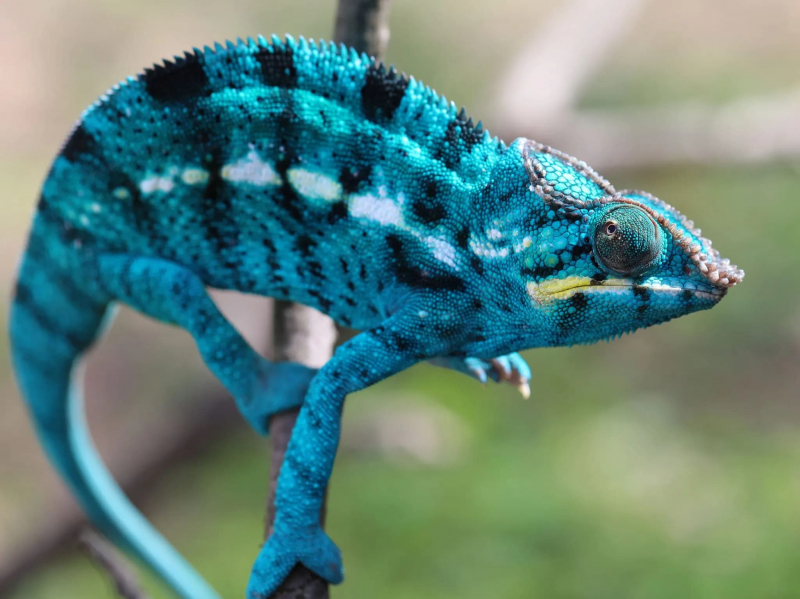
Madcham 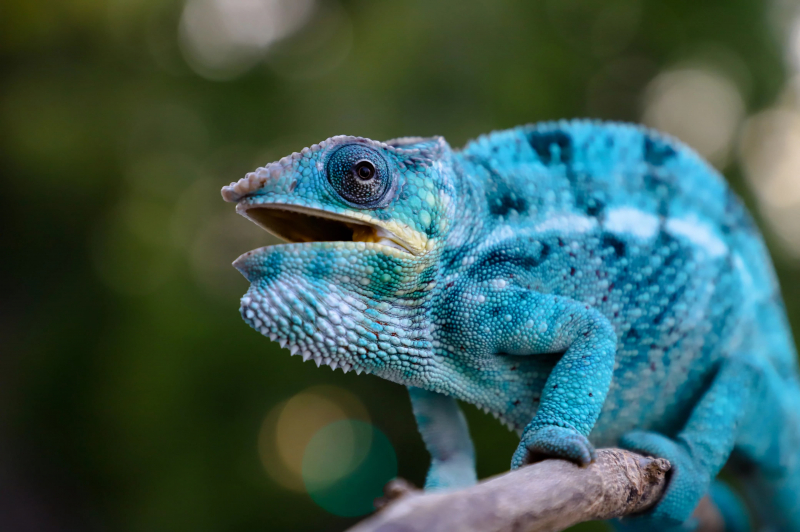
iStock -
Labord's Chameleon (Furcifer labordi) is a semelparous species of chameleon, a lizard in the family Chamaeleonidae. The species is endemic to Madagascar. This tetrapod (four-limbed vertebrate) species spend more of its brief lives within the egg than outside and have the shortest longevity of any four-limbed vertebrate species ever documented (only 4-5 months post-hatch). This low life span is unknown in other tetrapods. These results imply that the quick demise of chameleons in captivity may really represent the natural adult life span for some species.
Labord's chameleons emerge from their eggs in November, growing at an incredible rate, and become sexually mature by January. By February, they will have engaged in fierce competition for partners, bred, and laid their eggs. The only representation of the complete species for the following nine months is eggs.
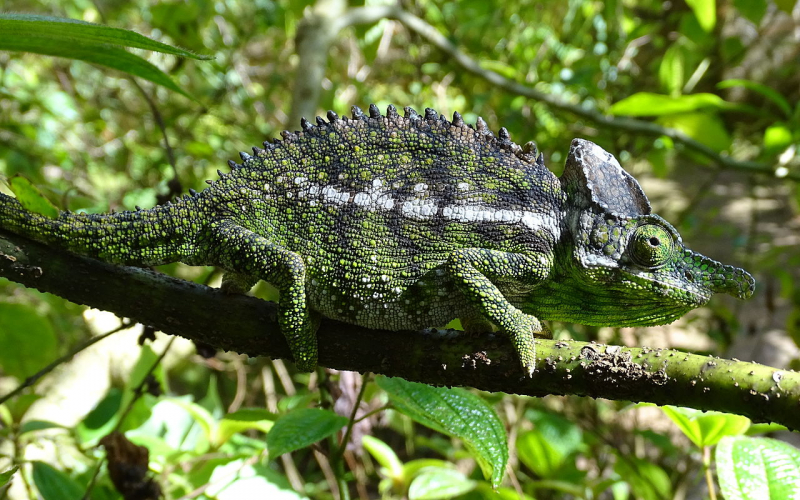
Wikimedia Commons 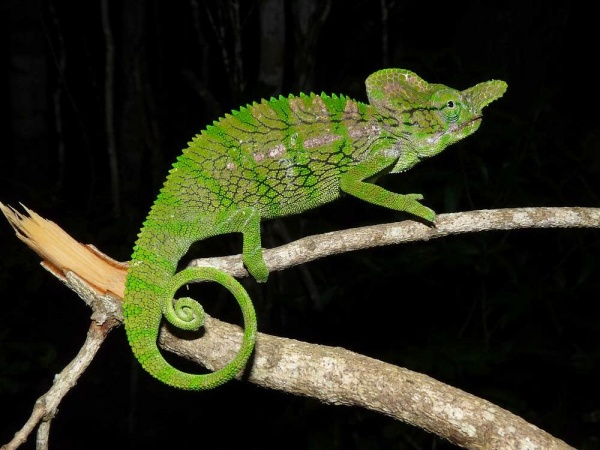
MadaCamp -
The Carpet Chameleon (Furcifer lateralis), also known as the white-lined chameleon, is a species of chameleon that is endemic to Madagascar. It was described in 1831 by John Edward Gray. Furcifer lateralis is also commonly known as the jewel chameleon, the white-lined chameleon, and the carpet chameleon.
Furcifer lateralis can grow to a maximum length of between 17 and 25 centimeters in both sexes. Males are primarily green, but females have larger bodies, and a greater variety of colors, including white, yellow, and orange bands. The lips and throats of both sexes are striped. They have the ability to alter their color depending on their mood and the surrounding environment, and they typically start the day with a dark color to allow them to quickly warm up by being exposed to sunshine. This species is one of the tiniest "genuine" chameleon species, and it is fearful and timid. The major form is currently acknowledged as a distinct species called Furcifer major.
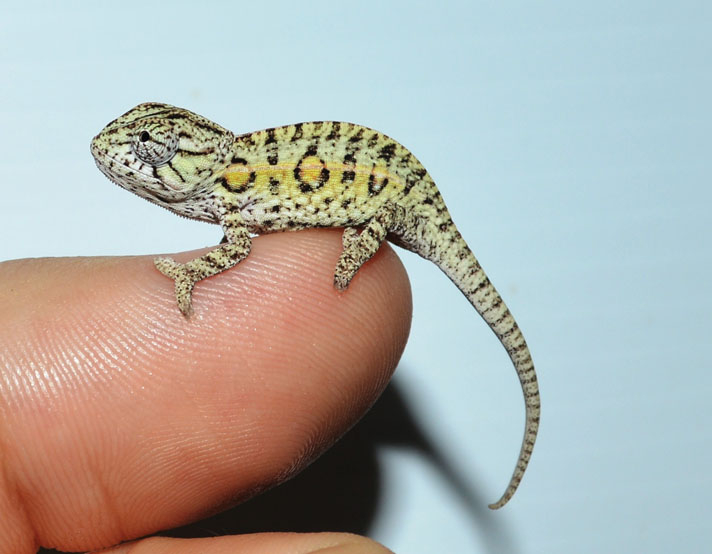
Reptiles Magazine 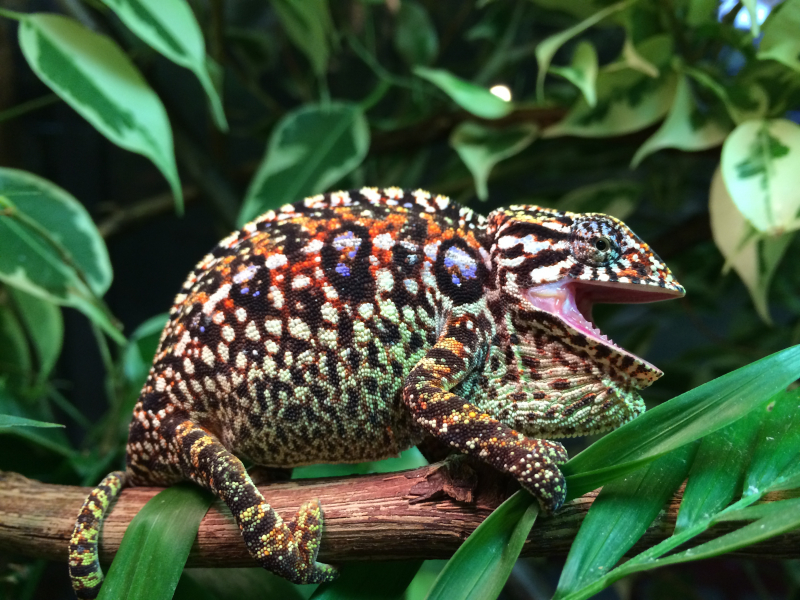
Reptiles Magazine -
The Jeweled Chameleon (Furcifer campani), sometimes known as the Madagascar forest chameleon or Campan's chameleon, is a type of lizard that belongs to the Chamaeleonidae family. The species is native to Madagascar's central highlands, where habitat degradation and bushfires pose a threat to it. Chameleons are ambush predators that wait patiently for suitable prey to approach before striking. A chameleon's main food source is insects, which it captures with the help of its long, sticky tongue.
F. campani reaches a maximum length of approximately 14 centimeters, including the tail. From light green to dark green to brown, the background color ranges. Each side of the body has three lateral stripes of light brown, with several little patches of bright color interspersed between them. Small red patches are frequently used as head decorations. A crest made of tiny protruding granules runs down the back of this chameleon.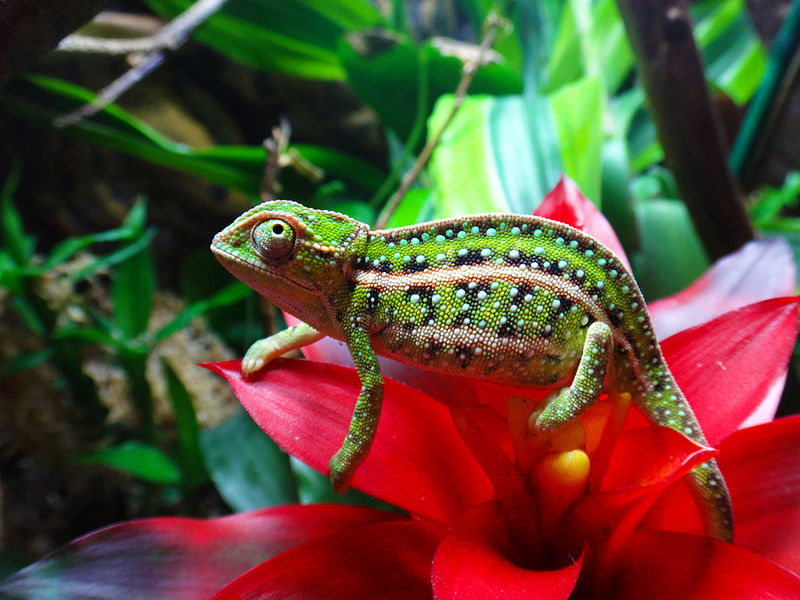
Wikipedia 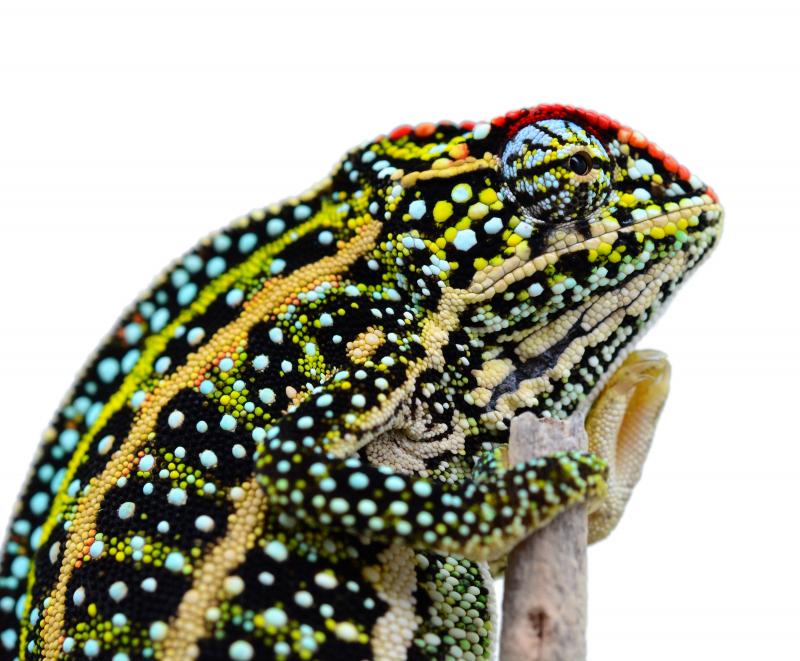
Pinterest -
The Lesser Chameleon (Furcifer minor) or Minor's chameleon is a species of lizards in the family Chamaeleonidae. It is endemic to Madagascar. The lesser chameleon inhabits a grassy habitat that is divided up into dry arboreal habitats. It often leads to a solitary existence and is frequently hostile to other individuals of its own species. They hunt in a flexible manner.
Contrary to other chameleon species, the female is the more colorful sex. Unlike most chameleons, the female is the more colorful sex, gravid females are adorned with alternating greenish-black and yellow bands and yellow speckling highlighting darker areas. The lower jaw is coated in scarlet, and the sides of its breast are covered in blue-violet, red, and black dots. The female displays yellowish banding while dozing off. Males have patterns in various colors of brown, black, white, and reddish-orange, though during displays they may take on a heavier black and white banded appearance. The most noticeable feature of the male is the rostral appendage which protrudes from the end of its snout. Males may be up to 24 cm in size whilst females tend to be approximately 16 cm in size.
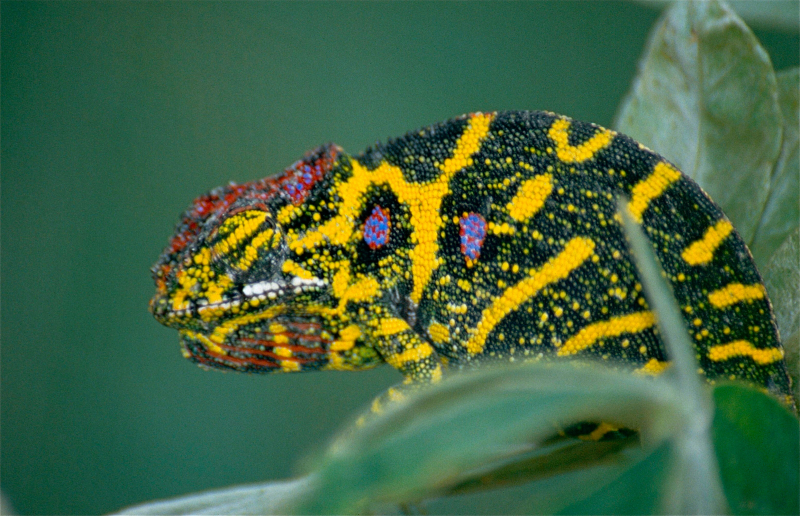
Encyclopedia of Life 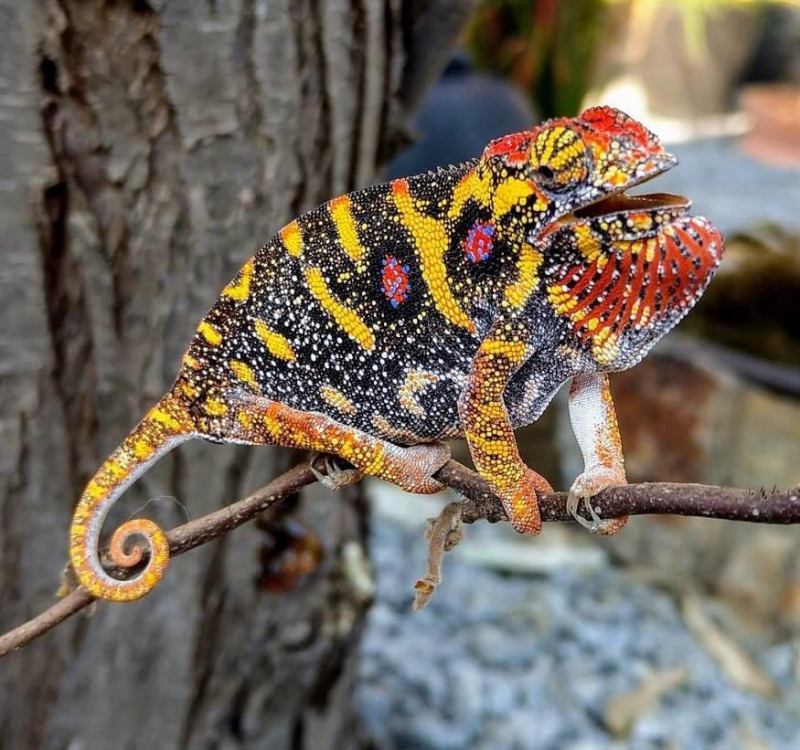
Pinterest -
Parson's Chameleon (Calumma parsonii) is a large species of chameleon in the family Chamaeleonidae. The species is endemic to isolated pockets of humid primary forest in eastern and northern Madagascar. Since it is included in CITES Appendix II, trade in this species is controlled. While it is illegal to export the majority of Madagascar's chameleon species, a small number of Parson's chameleons can be taken out of the nation lawfully each year.
The largest species of chameleon still living is the Parson's chameleon. When fully grown, this species approaches 60 cm in total length, with snout-vent lengths typically between 20 and 30 cm. At maturity, this species might weigh as much as 700 g. The brilliant orange color of the Parson's chameleon's eyes stands out sharply against its green skin. Because their upper and lower eyelids are connected, these are quite unique. The pupil's exposure to light is reduced as a result. The eyes have a field of vision that spans all 360 degrees and can focus on two different objects at once.
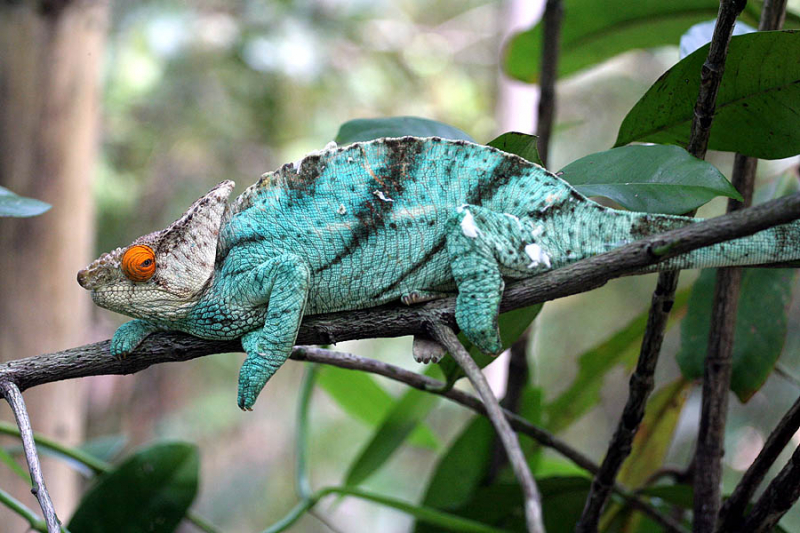
Wikipedia 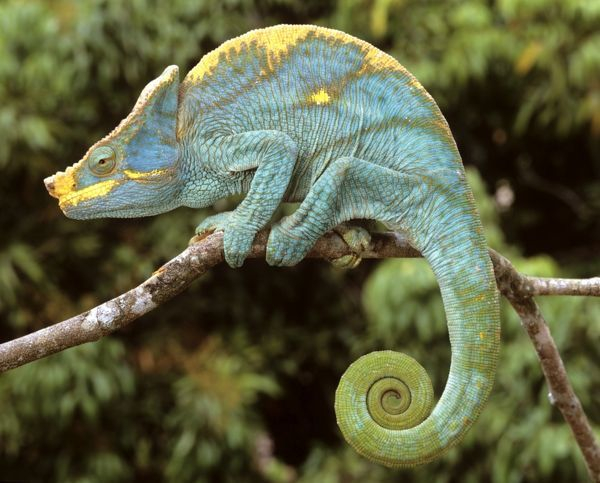
Media Storehouse -
Furcifer verrucosus, also known as the Warty Chameleon, spiny chameleon, or crocodile chameleon, is a species of small reptile endemic to Madagascar. It was first described by Georges Cuvier in 1829. It occurs in drier regions of the south and over a large portion of the island's west. It prefers arid disturbed land, particularly areas close to the sea, and is rarely found in primary rainforests. It is a species that lives on the ground and may climb up small shrubs. It occasionally hides away in a sandy burrow during hot weather to stay cool.
The male warty chameleon can reach a length of 56 centimeters, while the females can grow to a length of 21 centimeters. It possesses a casque, a helmet-like crest made of scales, on its head. From its eyes to its nose, a tiny crest follows an elevated ridge. A lateral border of thick scales is present on both sexes. It has a long, prehensile tail. This chameleon's main color is a grey or brown shade that has been differently blotched or faintly banded, and it has a white stripe running intermittently down either side. Males frequently have green tinges on their abdomen, tail, and limbs whereas females are typically paler in color.
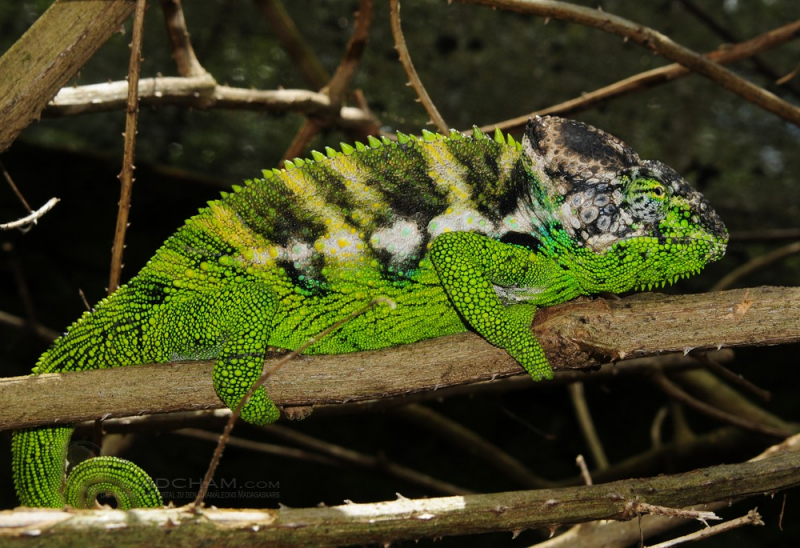
Madcham 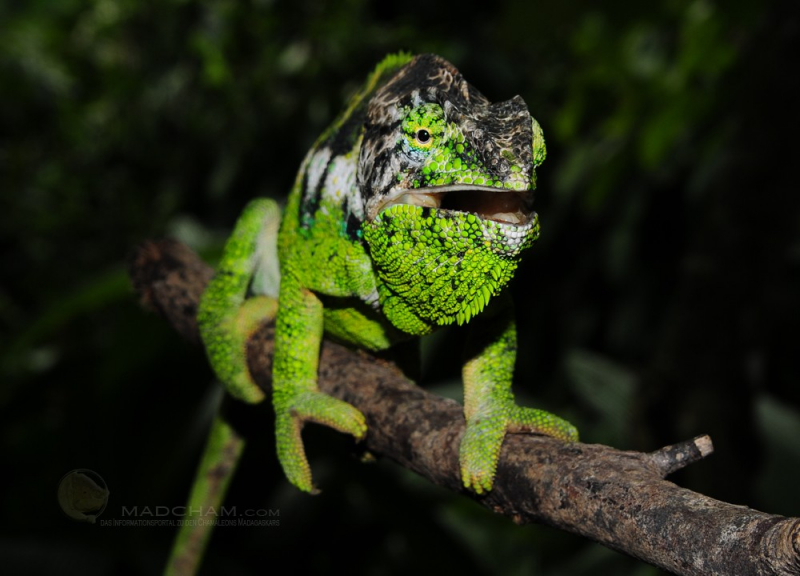
Madcham














